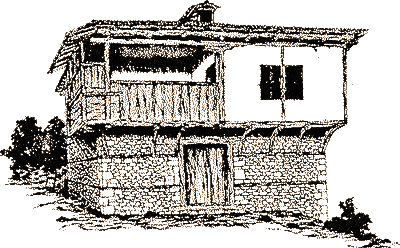
The historical sites
for archaeology of extraordinary quality include those at Stobi in
Gradsko, Heraklea Lynkestis in Bitola, Lychnidos, the Church of St.
Sophia in Ohrid, and Scupi in Skopje. Historians and archaeologists
became greatly interested in Macedonian architecture when terracotta
icons were discovered at Viničko Kale (near Vinica). The Basilica
Mosaic in Heraklea Lynkestis is an ancient mosaic. There are many
remains from Roman times and the early Christian period in Vardar
Macedonia, which was at the time part of the Bulgarian Empire.
Famous architects and
fresco-painters worked on numerous churches in the Republic of
Macedonia, and in Ohrid alone there are over thirty churches. UNESCO
has declared that the city of Ohrid and its lake must be protected,
as they are important to the history of the world. Several churches,
the most renowned among which is St. Pantelejmon, bear witness to
the times of the educator St. Clement and in 1990 work on the
Cathedral of St. Clement of Ohrid in Skopje was completed. Along
with other cultural monuments the 11th and 12th century churches of
Eastern medieval Bulgaria (known today as the Republic of Macedonia)
are famous throughout the world, characterized by unique
architecture and priceless frescoes and icons.
Monuments of Islamic culture
such as mosques, bazaars and baths from the Ottoman Age have been
discovered. In the 14th century, Skopje was described as being an
important trading center with its Old Bazaar, Covered Marketplace (Bezisten),
the Kursumli An Caravanserai, Daut Pasha Baths and the Mustapha
Pasha Mosque. Another important monument of Islamic culture in
Vardar Macedonia is the Painted Mosque in Tetovo. A large number of
monuments were erected after the liberation of the city. One of the
most interesting monuments erected following the region's liberation
is the memorial devoted to the Ilinden Uprising in Kruševo. Other
memorials renowned for their beauty and expressiveness can be found
in Prilep, Kumanovo, Veles and Štip.

PICTURES
By:
http://en.wikipedia.org/wiki/Macedonian_culture_(Slavic)
|